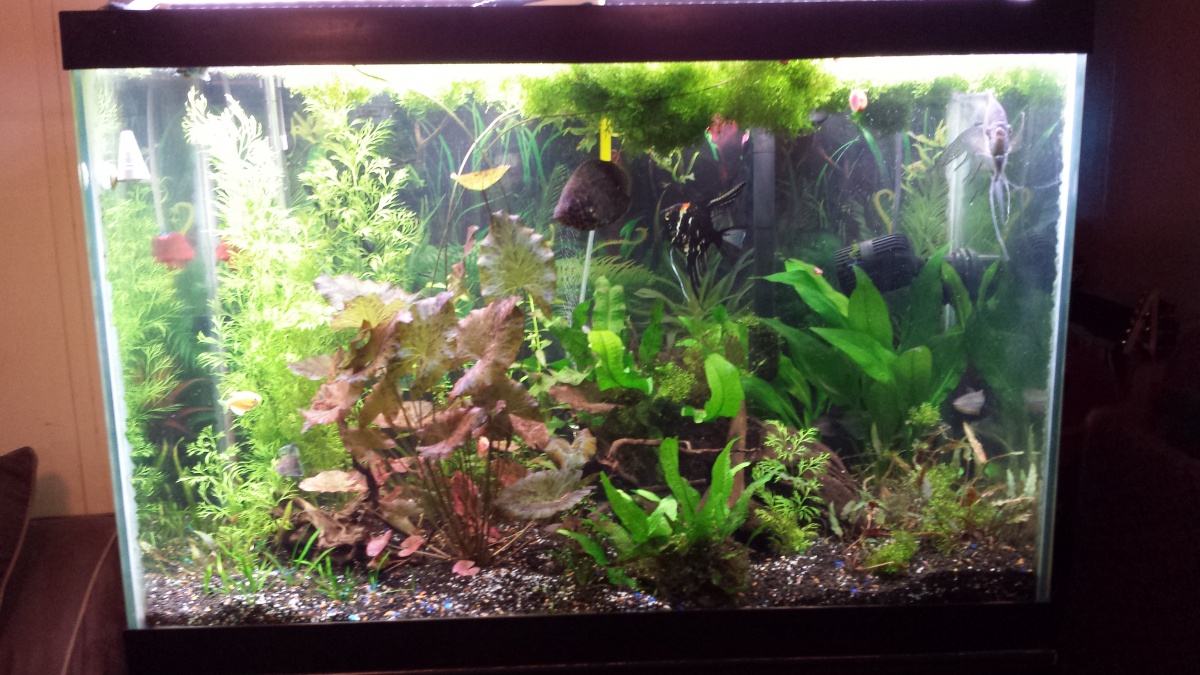Hobbiest
Aquarium Advice Activist
I don't know what to do my oldest angel, Sonic, has fin rot. She is about six years old now and I believe the cause of the fin rot is a younger breeding pair in the tank. I only have a five gallon empty at this time and that is way too small for her she is currently in a 65 gallon. If I went and bought a ten gallon could I treat with aquarium salt or will that hurt her?
My nitrates are 20, nitrite 0, ammonia 0, PH 6.5 water quality I do not believe is the problem and I do a 50% water change weekly, all other fish seem fine that is why I believe it is the breeding pair. Until now it was just her tail was jagged but today I noticed it has black on edges and more alarming is that half of her right ventricle fin is just GONE!
Is there a treatment that will help her regrow her fin? Please help she was my first angel and I don't want to loose her yet. Here is a picture it is not the best one to see what she looks like but it really shows the fin rot she is in the upper right hand corner

My nitrates are 20, nitrite 0, ammonia 0, PH 6.5 water quality I do not believe is the problem and I do a 50% water change weekly, all other fish seem fine that is why I believe it is the breeding pair. Until now it was just her tail was jagged but today I noticed it has black on edges and more alarming is that half of her right ventricle fin is just GONE!
Is there a treatment that will help her regrow her fin? Please help she was my first angel and I don't want to loose her yet. Here is a picture it is not the best one to see what she looks like but it really shows the fin rot she is in the upper right hand corner


